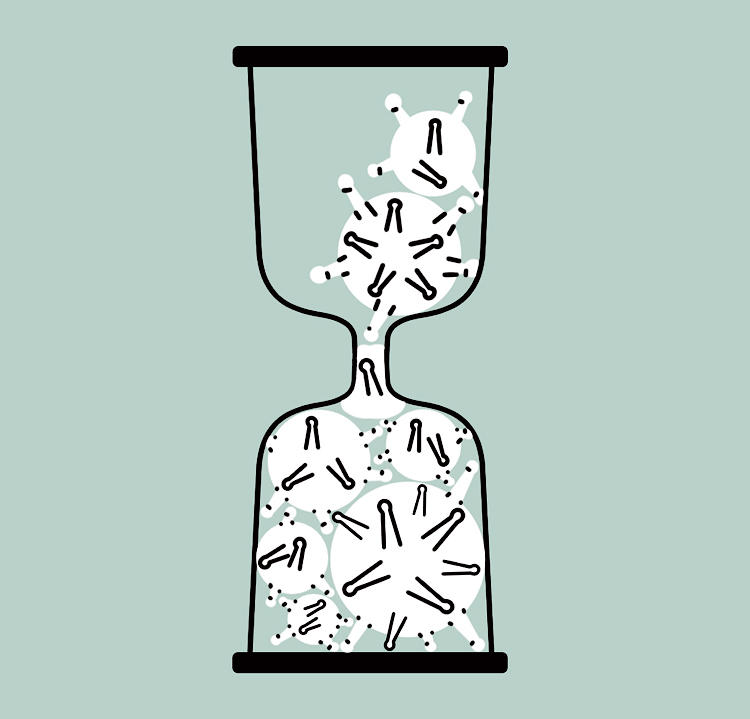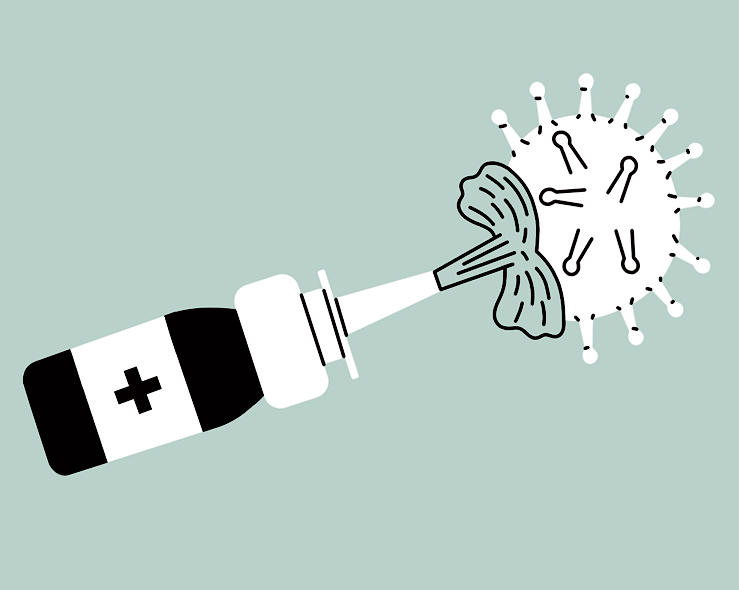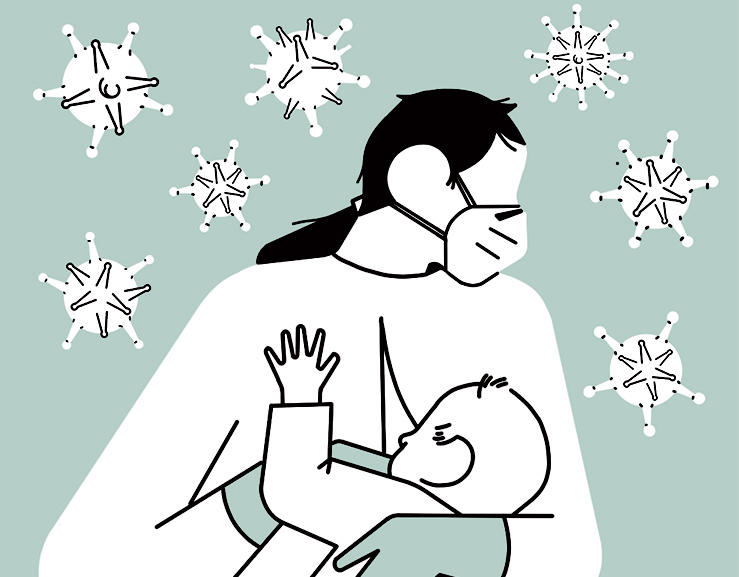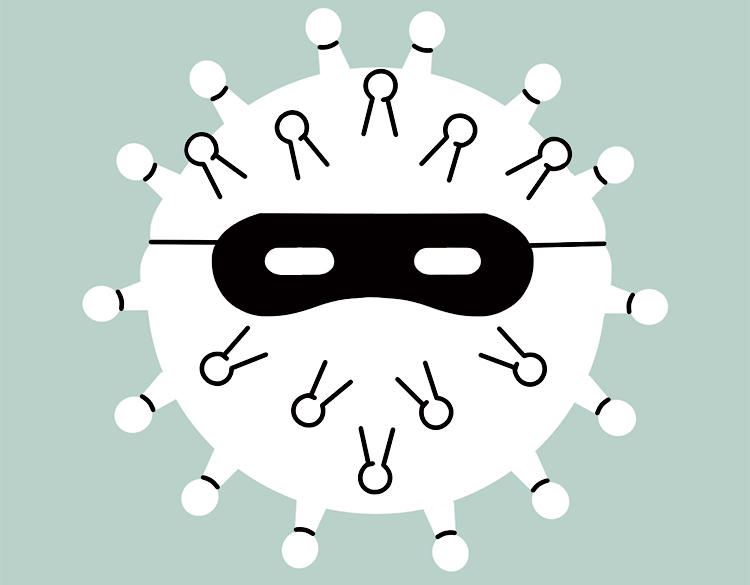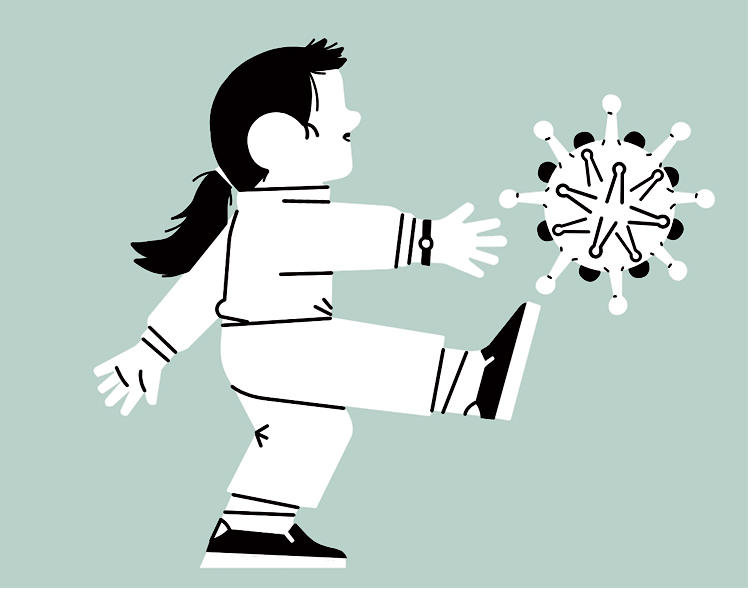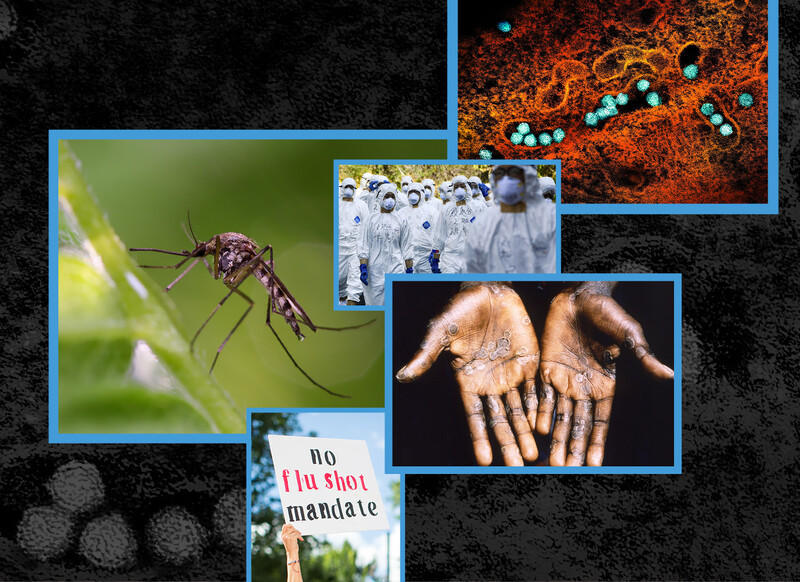As excitement builds about the release of a COVID-19 vaccine, many are now wondering: could the end of the pandemic finally be in sight? But while the rapid progress made by Pfizer, Moderna, and other companies on COVID-19 vaccines is unequivocally good news, top scientists are cautioning that the virus could be with us for years to come. Pandemics rarely end abruptly and decisively, they say, but rather wind down gradually, with incremental advances in vaccines, treatments, and social-distancing measures eventually bringing them under control. And so, at Columbia and other major universities, the quest to better understand the SARS-CoV-2 virus and develop new clinical interventions continues. Here are just a few of the most recent research developments.
We’re in it for the long haul
Jeffrey Shaman ’03GSAS and Marta Galanti, Columbia public-health researchers who use mathematical modeling to predict the spread of infections, recently published an article in the journal Science that explores how prevalent COVID-19 could remain in the years ahead. A key factor influencing the disease’s future threat, they say, will be the length of time people remain immune to COVID-19 after either contracting the disease or being vaccinated. Widespread testing will help answer this question, but the researchers predict that if immunity lasts less than twelve months, COVID-19 will be a constant public-health threat for years to come, possibly recurring seasonally, like the flu. If immunity lasts significantly longer, COVID-19 could be nearly eradicated by well-organized vaccine programs but then return with a vengeance a few years down the road.
How deadly COVID-19 will prove to be in the future will depend on many factors, such as the pace at which treatments improve and whether the virus evolves to become more aggressive or less so. But the bottom line, Shaman and Galanti suggest, is that the disease isn’t going anywhere soon. “Holding out hope that a vaccine will be enough to save us isn’t the level of preparation we need,” Shaman says. “We have to regard COVID-19 as a disease that we could be contending with for a very long time.”
Simple new treatments could protect us
Imagine if a daily spritz of nasal spray could protect you against COVID-19.
A team of Columbia microbiologists led by Anne Moscona ’82PS and Matteo Porotto has developed such a spray — one that, when inhaled, permeates the respiratory tract and shields it from any SARS-CoV-2 viral particles that may subsequently enter the body. If it encounters the virus, the medication will latch onto and dismantle the spike protein that SARS-CoV-2 uses to pry open its host’s cells, thus neutralizing its attack.
In a study in ferrets, the Columbia researchers have found the spray to be safe and effective, completely preventing the transmission of SARS-CoV-2 among animals in close quarters. The scientists, who hope to soon launch human trials, say the therapy begins working immediately and offers protection for at least twenty-four hours.
According to Moscona, the medication would be especially beneficial to the elderly, people with immune disorders, cancer patients, and others for whom vaccines are problematic. She says that it could also be distributed in developing countries where vaccines may not quickly become available. “If it works as well in humans as it does in animals, you could sleep in a bed with someone who has COVID-19 or be with your infected children and still be safe,” she says.
Keeping your baby healthy doesn’t have to interfere with bonding
A team of researchers at Columbia University Irving Medical Center (CUIMC) has found that mothers with COVID-19 have little risk of transmitting the disease to their newborns so long as they follow basic infection-control practices, such as wearing a mask, washing their hands frequently, and cleaning their breasts before breastfeeding.
The study, which represents the most detailed investigation yet on the risk of SARS-CoV-2 transmission between moms and infants, finds that more aggressive measures like separating sick mothers from their babies and avoiding breastfeeding — which some health-care experts had previously recommended — are not typically warranted.
Led by obstetrician-gynecologist Cynthia Gyamfi-Bannerman ’14PH, the study is based on observations of more than one hundred COVID-19-positive mothers and their newborns at CUIMC in the spring of 2020.
“During the pandemic, we continued to do what we normally do to promote bonding and development in healthy newborns, while taking a few extra precautions to minimize the risk of exposure to the virus,” says Gyamfi-Bannerman. “We think it’s particularly important that mothers with SARS-CoV-2 have the opportunity to directly breastfeed their newborns, as breast milk is known to protect newborns against numerous pathogens, and it may help protect newborns against infection with SARS-CoV-2.”
The virus is a clever mimic
Viruses are remarkably adept at evading the body’s natural defenses, often hiding among the very immune cells that hunt them by mimicking their chemical and physical structures. And coronaviruses, including SARS-CoV-2, are among the world’s most creative and successful practitioners of “viral mimicry,” as this survival strategy is known, according to research by Columbia systems biologist Sagi Shapira.
Shapira made this discovery while conducting the largest survey of viral mimicry to date — he used big-data analytic techniques to identify more than six million examples of mimicry by seven thousand viruses — and he believes that his analysis holds clues for fighting COVID-19. For example, Shapira has found that SARS-CoV-2 has a particular talent for disguising itself as immune cells that constitute one of the body’s first lines of defense against invaders, and that its mimicking of these cells plays a crucial role in pushing the immune system into a dangerously hyperactive state that can prove fatal to some COVID-19 patients.
Shapira recently teamed up with Nicholas Tatonetti, a Columbia data scientist and bioinformatics expert, to turn this observation into insights that could improve patient care; together they have since identified several genes that increase the likelihood of a patient’s immune system going haywire in the presence of SARS-CoV-2, leading to severe disease.
“One of the things we really need moving forward in the fight against COVID-19 is a way to quickly identify patients who will benefit from immune-suppressing drugs and other aggressive treatments,” says Shapira. “Our research shows that studying the basic biology of the virus can help guide those discoveries.”
Children are often better equipped to conquer COVID-19
One of the striking things about COVID-19 is that children tend to cope with it much better than older people do. To understand why, a team of Columbia researchers led by immunologist Donna Farber and Matteo Porotto (the microbiologist who also helped develop the nasal spray) recently conducted an in-depth comparison of children’s and adults’ physiological responses to the disease. The scientists found a “stark contrast” in the types and amounts of immune cells they produce. For example, they discovered that children generate fewer antibodies, which are among the last, heaviest weapons the immune system deploys against pathogens. The researchers say this suggests that children do a better job of fighting off the disease in its earliest stages.
“In kids, the infectious course is much shorter,” Porotto says. “They may clear this virus more efficiently than adults and may not need a strong antibody immune response to get rid of it.”
The Columbia researchers are now pursuing follow-up studies to learn how children’s immune systems are able to dispense with SARS-CoV-2 so quickly; one popular hypothesis they are testing is whether children’s propensity to catch seasonal colds, many of which are caused by other coronaviruses, may help prepare their bodies to recognize and fight off SARS-CoV-2.
“There are so many aspects of COVID-19 that we still have very little information about,” Porotto says. “The interaction between the virus and the individual host is the reason why we see so much diversity in clinical responses, but we don’t understand enough about this virus yet to really determine what leads to severe disease or what leads to mild disease.”
For more news about COVID-19 research at Columbia, click here.
